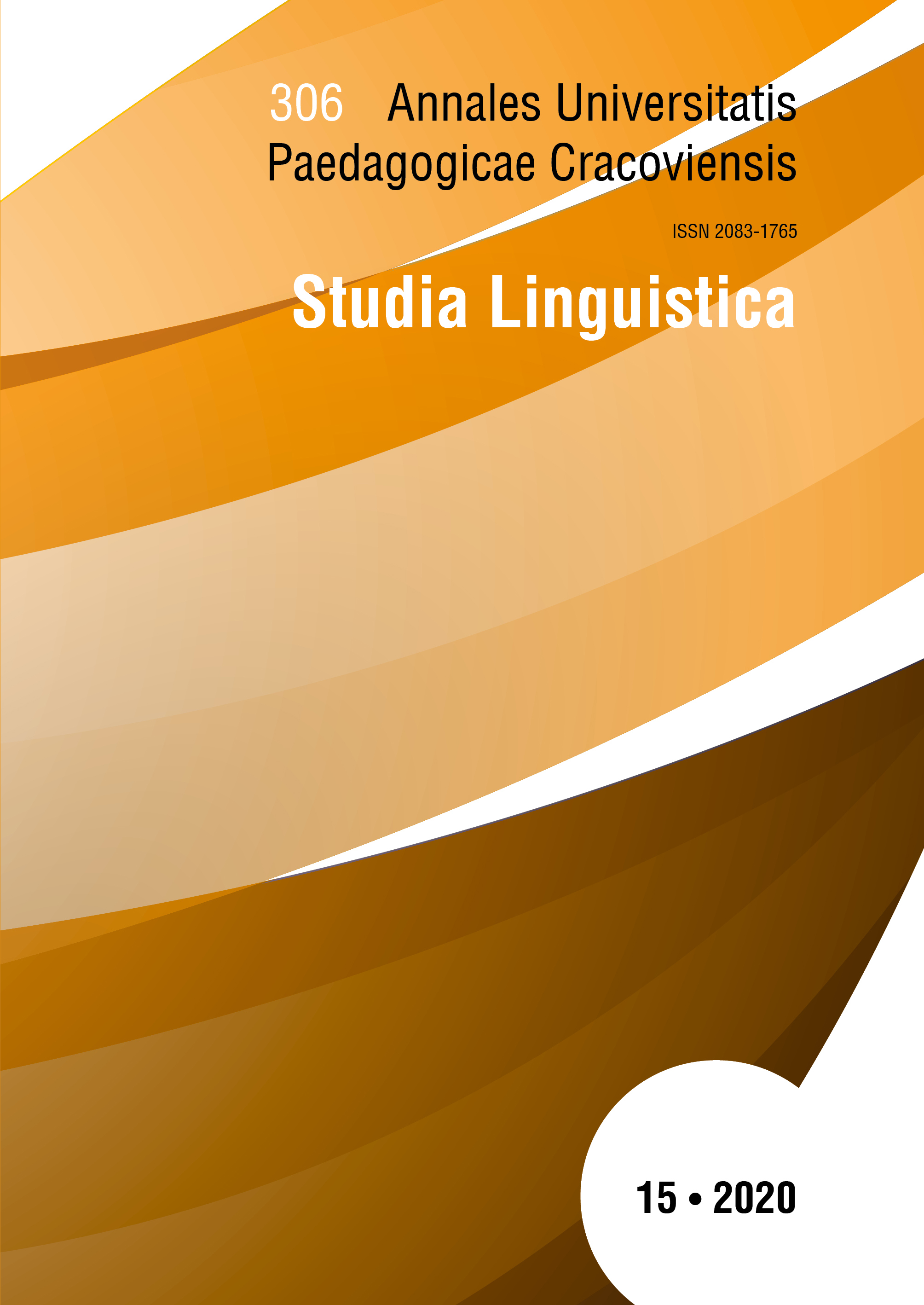About the Old Polish derivatives with suffix -ota
Main Article Content
Abstract
The article presents a description of the Old Polish nominal derivatives with the suffix -ota in terms of their etymology, word-formation and semantics. In addition, the issue of the productivity of nouns was raised - the words that retain lexical continuity in the history of the Polish language from Old Polish to modern Polish were discussed along the derivatives that have not survived in the Polish lexicon until today.
Downloads
Article Details
Author, submitting a text to the editorial board of the journal “Annales Universitatis Paedagogicae Cracoviensis. Studia Linguistica", certifies that the content of the article has not been published so far and that the work does not violate in any way the copyright or related rights of other person, as well as other rights of third parties, and that no one's rights to the work (or any part thereof) have been missed. After signing the contract, the property rights to the published materials are transferred to the Scientific Publisher of the University of the National Education Commission, Krakow.
“Annales Universitatis Paedagogicae Cracoviensis. Studia Linguistica” is an open access journal, and all its content is made available free of charge to users and institutions under the Creative Commons CC-BY-NC-ND 4.0 license (attribution, non-commercial use, no derivative works). Under this license, the authors agree that their work may be lawfully reused for any purpose, except for commercial purposes, without the prior consent of the author or publisher. Everyone can read, download, copy, print, distribute and process these works, provided that the author's marking and the original publication place are correct. Published texts may not be used to create derivative works (e.g. to translate and publish in another language without the consent of the publisher). This is in line with the BOAI (Budapest Open Access Initiative) definition. "Studia Linguistica" does not charge for submitting or processing articles.
References
Boryś W., 2005, Słownik etymologiczny języka polskiego, Kraków.
Google Scholar
Długosz-Kurczabowa K., Dubisz S., 2016, Gramatyka historyczna języka polskiego, Warszawa.
Google Scholar
Jasińska K., 2016, O zaginionej staropolskiej chrapocie, „Linguarum Silva”, t. 5, s. 53–60.
Google Scholar
Jasińska K., 2018, Dziedzictwo praindoeuropejskie w staropolszczyźnie. Rzeczowniki[w druku], Kraków.
Google Scholar
Kleszczowa K. red., 1996, Słowotwórstwo języka doby staropolskiej. Przegląd formacjirzeczownikowych, Katowice.
Google Scholar
Kleszczowa K., 1998, Staropolskie kategorie słowotwórcze i ich perspektywiczna ewolucja. Rzeczowniki, Katowice.
Google Scholar
Kuryłowicz J., 1964, The Inflectional Categories of Indo-European, Heidelberg.
Google Scholar
Mallory J.P., Adams D.Q., 2006, The Oxford Introduction to Proto-Indo-European and the Proto-Indo-European World, Oxford.
Google Scholar
Mróz-Ostrowska E., 1962, Formacje z przyrostkiem -ość w strukturze języka XVI wieku,[w:] Odrodzenie w Polsce, t. III: Historia języka, red. M.R. Mayenowa, Z. Klemensiewicz, cz. 2, Warszawa.
Google Scholar
Sobotka P., 2017, Komentarz językowy a interpretacja i rozumienie tekstu dawnego, [w:] Jak wydawać teksty dawne, red. K. Borowiec, D. Masłej, T. Mika, D. Rojszczak-Robińska, Poznań, s. 313–334.
Google Scholar
Vaillant A., 1974, Grammaire comperée des langues slaves, Lyon.
Google Scholar
